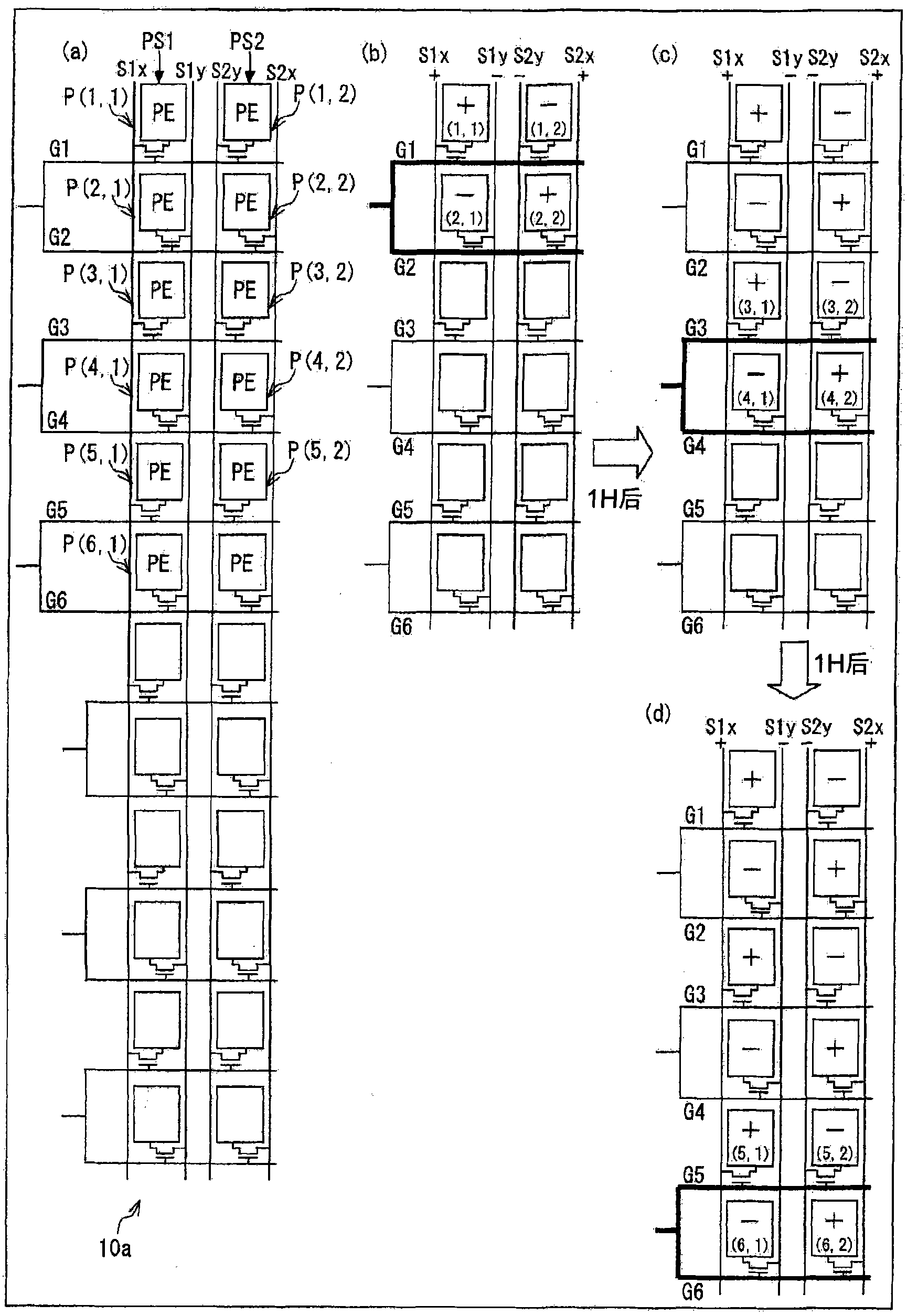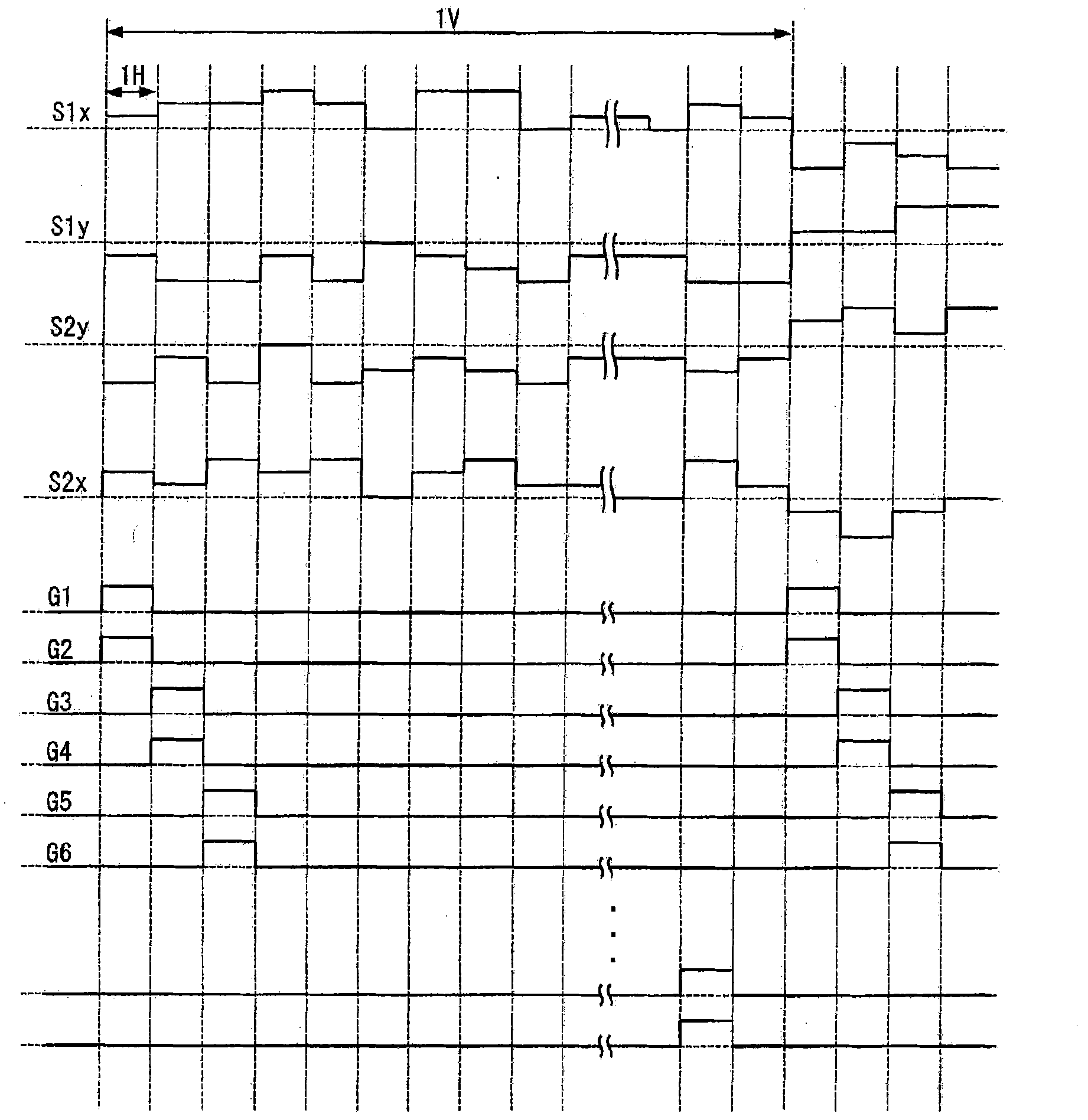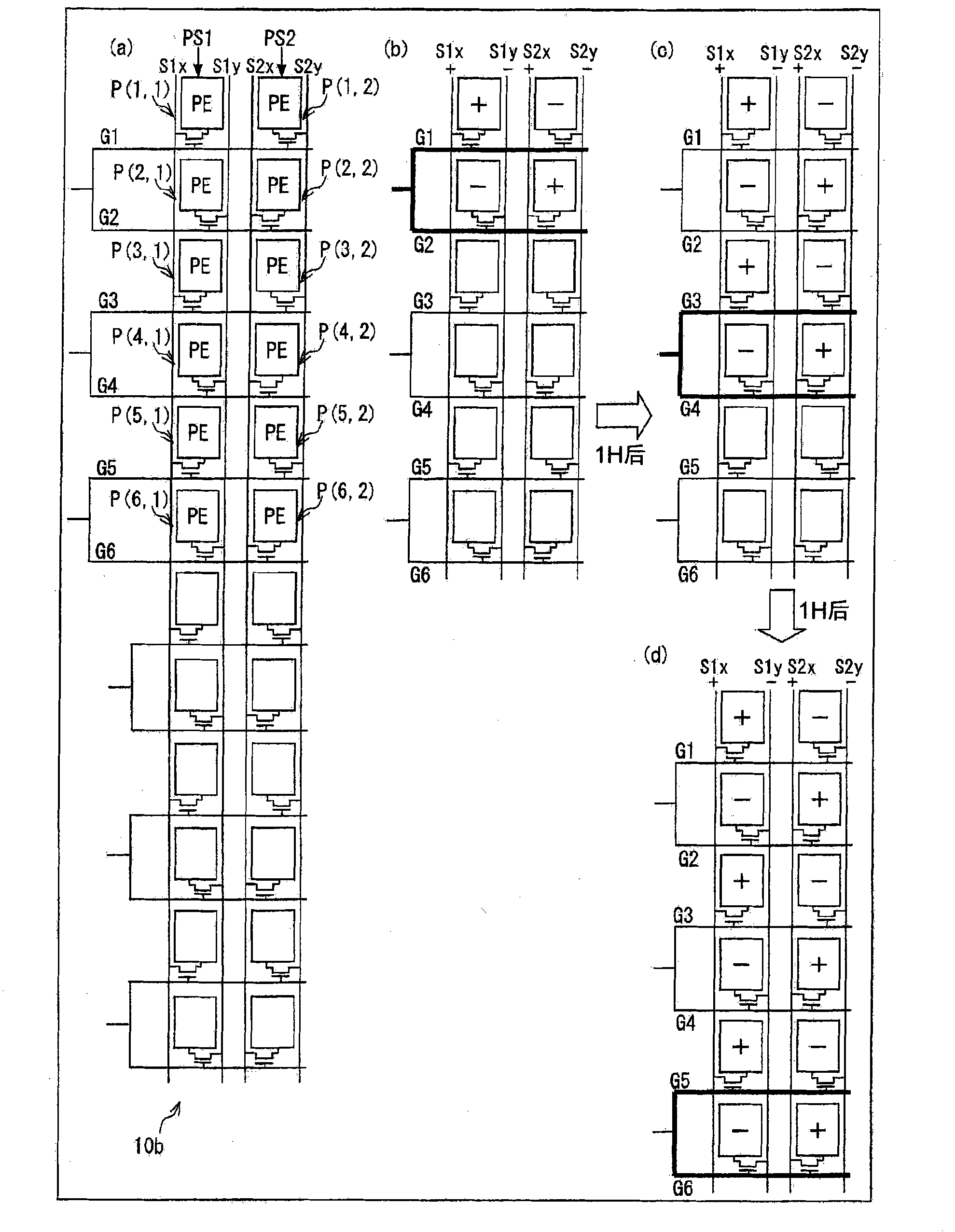Liquid crystal display, liquid crystal display driving method, and television receiver
A liquid crystal display device, potential technology, applied in TV, TV system components, electrical components, etc., can solve problems such as difficult pixel charging, increased resistance of data signal line wiring, etc.
- Summary
- Abstract
- Description
- Claims
- Application Information
AI Technical Summary
Problems solved by technology
Method used
Image
Examples
Embodiment approach 1
[0115] figure 1 (a) is a schematic diagram showing a configuration example of a display portion of the present liquid crystal display device, figure 1 (b) to (d) are schematic diagrams showing a driving method of the display unit, figure 2 is a timing chart showing this driving method. Such as figure 1 As shown in (a), in the display portion 10a, first and second data signal lines (for example, S1x and S1y) are provided corresponding to one pixel row (for example, PS1), and one pixel (for example, PS1) included in the pixel row P(1,1)) is connected to one scan signal line (for example, G1), and is connected to one of the first and second data signal lines (for example, S1x and S1y). Specifically, starting from the first row of pixels in each pixel column, two pixels adjacent in the column direction are regarded as a pair in sequence, and when considered sequentially in this order, the two pixels of each pair have different data The signal lines are connected, and for two ...
Embodiment approach 2
[0143] Figure 13 (a) is a schematic diagram showing a configuration example of a display portion of the present liquid crystal display device, Figure 13 (b) to (d) are schematic diagrams showing a driving method of the display unit, Figure 14 is a timing chart showing this driving method. Such as Figure 13 As shown in (a), in the display portion 10e, first and second data signal lines (for example, S1x and S1y) are provided corresponding to one pixel column (for example, PS1), and one pixel ( For example, P(1, 1)) is connected to one scan signal line (for example, G1) and connected to one of the first and second data signal lines (for example, S1x and S1y). Specifically, starting from the pixel in the first row of each pixel column, two pixels adjacent in the column direction are regarded as a pair in sequence, and when considered sequentially in this order, the two pixels of each pair and different data signals For two consecutive pairs, the data signal lines connecte...
Embodiment approach 3
[0171] Figure 25 (a) is a schematic diagram showing a configuration example of a display portion of the present liquid crystal display device, Figure 25 (b) to (d) are schematic diagrams showing a driving method of the display unit, Figure 26 is a timing chart showing this driving method. Such as Figure 25As shown in (a), in the display portion 10i, first and second data signal lines (for example, S1x and S1y) are provided corresponding to one pixel row (for example, PS1), and one pixel (for example, PS1) included in the pixel row , P(1, 1)) is connected to one scan signal line (for example, G1) and connected to one of the first and second data signal lines (for example, S1x and S1y). Specifically, starting from the first row of pixels in each pixel column, two adjacent pixels in the column direction are sequentially regarded as a pair, and two adjacent pairs are sequentially regarded as a group, and when considered sequentially in this order , in each group, each pair...
PUM
 Login to View More
Login to View More Abstract
Description
Claims
Application Information
 Login to View More
Login to View More - R&D
- Intellectual Property
- Life Sciences
- Materials
- Tech Scout
- Unparalleled Data Quality
- Higher Quality Content
- 60% Fewer Hallucinations
Browse by: Latest US Patents, China's latest patents, Technical Efficacy Thesaurus, Application Domain, Technology Topic, Popular Technical Reports.
© 2025 PatSnap. All rights reserved.Legal|Privacy policy|Modern Slavery Act Transparency Statement|Sitemap|About US| Contact US: help@patsnap.com



